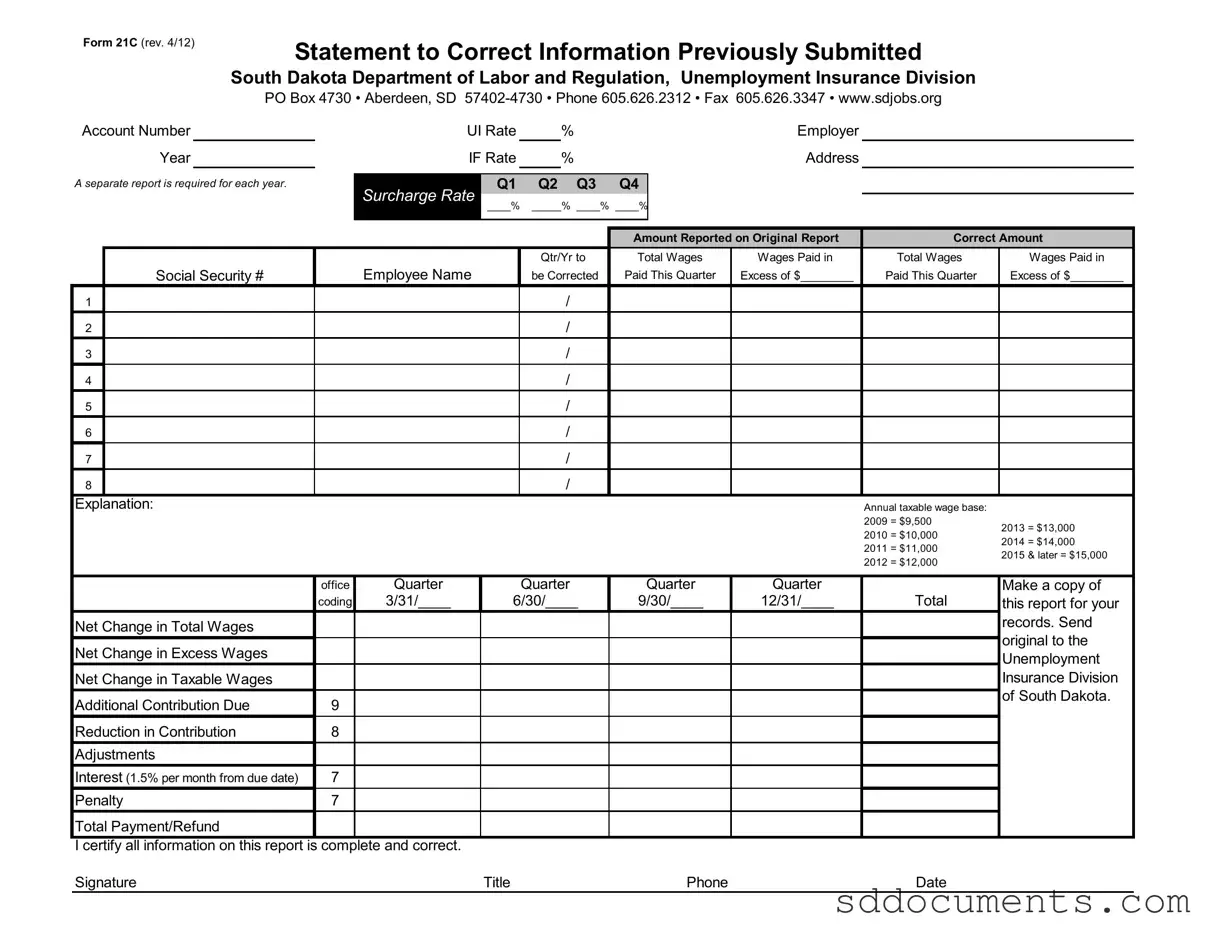Fill Out Your South Dakota From 21C Template
The South Dakota Form 21C is a document used to correct information that has previously been submitted to the South Dakota Department of Labor and Regulation's Unemployment Insurance Division. This form ensures that any discrepancies in reported wages or contributions can be accurately addressed, maintaining compliance with state regulations. For employers needing to amend their records, filling out this form is a crucial step in the process.
To get started on correcting your information, click the button below to fill out the form.
Customize Document Online
